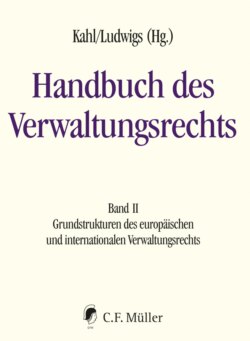| 1. | Implementation of EU law involves the transposition and enforcement of EU law and takes place both at the EU level (central administration) and at the domestic level (decentralised administration). Yet the rich phenomenology of implementing EU law transcends this juxtaposition of central and decentralised administration. Instead, it is shaped by an intense cooperation of different administrative institutions at various levels (EU, domestic, and hybrid). Hence, the implementation of EU law has established a composite administration (par. 1–3). |
| 2. | EU primary law accords the EU legislature considerable discretion in determining the level of administration for implementing EU law (par. 4–6). |
| 3. | Central EU administration has become more and more polycentric and multifaceted in recent years, with highly differentiated functions. This development is driven by the objective to strengthen the uniform implementation of EU law (par. 7–10). |
| 4. | The requirements established in Art. 298 TFEU and in Art. 41 CFR lay down the fundamental constitutional and procedural foundations for the EU’s administration, while at the same time broadening the scope for the EU legislature (par. 11–13). |
| 5. | The Commission and the Council, but also other institutions (ECB, central and decentralised agencies, bodies, networks) are charged with EU central administration, according to specific attributions of detailed administrative tasks and functions (par. 14–15). |
| 6. | A plethora of general principles for the function and organisation of EU central administration have emerged as part of the EU’s administrative constitutional law. First, they steer its institutional organisation and guide the establishment and attribution of administrative tasks. Secondly, they regulate the founding principles for its functioning, and, thirdly, lay down basic procedural principles (par. 16–29). They are amended by monitoring structures and instruments (par. 30–31). |
| 7. | The legal rules and instruments for EU central administration are set out in primary but mainly in secondary and tertiary EU law (par. 32–34). |
| 8. | EU central administration develops a very plural and highly differentiated and diversified structure, which centralises the implementation of EU law and determines domestic implementation more and more. Increasing the level of democratic control remains a major demand (par. 35–36). |
| 9. | Common administrative law denotes the sum of legal rules established by the EU. These rules steer the decentralised implementation of EU law by domestic institutions. Domestic bodies implement EU law in a decentralised manner and according to domestic rules and procedures, unless EU law contains specific stipulations restraining national procedural and institutional autonomy. The most general stipulations in this respect derive from the requirement of efficiency and equivalence. This represents the first step in the harmonisation of domestic administrative law (par. 37–40). |
| 10. | The EU legislature enjoys broad discretion in defining uniform stipulations for domestic procedures, rules, and institutions. Beyond this, the decentralised implementation of EU law is subject to the general stipulations of EU law for the application of domestic law. They include the primacy of and loyalty to EU law, respect for human rights and for the EU’s general principles of law, and the demand for effective legal protection (par. 41–44). |
| 11. | EU institutions are capable of monitoring domestic implementation in the interest of ensuring uniformity, even though they in principle do not have the right to issue instructions. The relevant instruments and mechanisms must be and have been provided for in EU law in great and sophisticated detail, and the EU also uses soft law instruments not provided therein (par. 45–47). |
| 12. | The decentralised implementation of EU law has brought about massive and profound changes in national administration. In addition to institutional modifications, this has entailed considerable shifts in the way national administrative activities are conducted. To achieve these structural changes, Union law makes use of a number of legislative instruments (par. 48). |
| 13. | Common administrative law forcefully changes national administrative law, a transformation that manifests itself also in fundamental institutional shifts, which alter the domestic administrative organisation as well as the way administrative tasks are performed and conceived (par. 49–51). |
| 14. | General principles of EU administrative law place uniform demands on administrative implementation. These demands result from a common set of fundamental procedural standards in the national (constitutional) legal systems (cf. Art. 6 [3] TEU), which are also reflected in the ECHR and do not prevent concretisation by the EU legislature (par. 52–56). |
| 15. | Common administrative law increases proceduralisation, participation, subjectification, and institutional diversification in national administrative law. However, in the absence of Union law, their concrete consequences are often not defined in detail, to the detriment of legal clarity. The contours of EU modifications to domestic rules and procedures often remain arcane, unless the ECJ or the EU legislature clarify them (par. 57–58). |
| 16. | Continuing challenges for Union administrative law remain strengthening democratic control and ensuring effective legal protection, especially in view of the cooperative structures and the entanglement of EU and national law (par. 59). |
